Plum Headed parakeets are some of the most popular and widespread parrots around. With their perfect set of traits, lovely looks, and social behavior, they are loved worldwide as pets and family members. They are very smart, playful, and always make your day a little more interesting. Learn more about one of the oldest domesticated parrot breeds. Plum headed parrot in Pakistan starts with 18000 PKR to 20,000 PKR
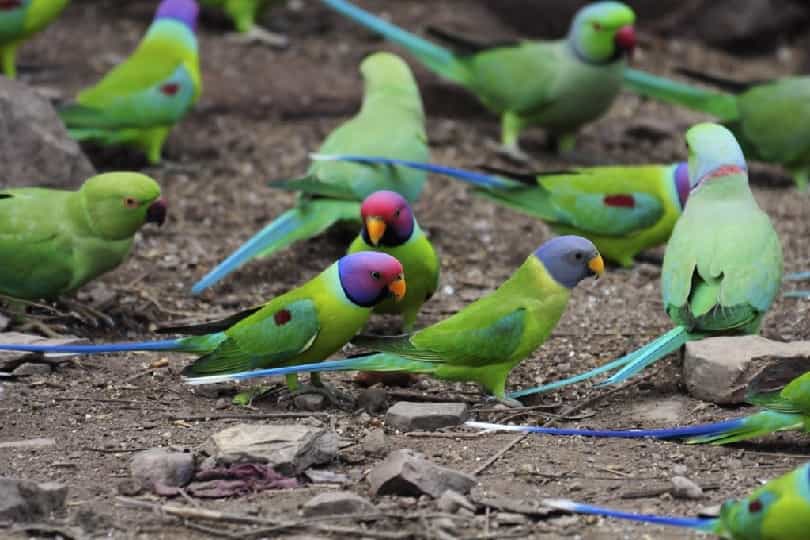
Plum Headed Parakeet
The plum-headed parakeet is a beautiful, medium-sized Asian parrot that makes a great pet. This parrot species is less aggressive and possessive than some others, and it gets along well with others. It is also less demanding of an owner’s time than many other parrots, but it still needs regular interaction to remain socialized.
Watch a detailed video on plum headed parakeet parrot in Urdu / Hindi very valuable information is shared here.
History
The plum-headed parakeet is a native bird of Indian, Pakistani, Sri Lankan, and Bangladeshi origin. These parakeets make their homes in woodlands and forests, where they build nests in trees.
Some plum-headed parakeets have escaped from captivity and can now be found living in a variety of climates all over the world. In some cases, these escaped birds have even established small breeding populations.
The intermediate parakeet (Psittacula intermedia), which is thought to be a hybrid between the plum-headed and slaty-headed parakeet, is a variation of this species.
Although the number of these birds in the wild is gradually diminishing due to habitat loss, plum-headed parakeets are still thriving and are not in danger of extinction.
Behavior of Plum Headed Parakeets
If you’re considering getting a plum-headed parakeet, know that they are generally gentle and social birds that bond well with their owners. They can be a bit stand-offish with strangers, but they are relatively quiet compared to other parrots, making them a good choice for those bird owners who live in close proximity to neighbors.
If you hand-feed them as babies, plum-headed parakeets can become quite tame and will form a strong bond with their human companion. Although they are not as demanding of an owner’s time as many other parrots, they still need regular interaction to maintain the emotional connection.
It is essential for those who do not have experience with Psittacula species to understand that many of these birds will go through a bluffing phase during their adolescence.
This phase is strictly hormone-related and is not an indication of how the bird’s personality will be once it reaches maturity. Generally, birds that are handled daily stay tame and bond well with their owners.
However, it is important to know that if you are not planning on handling your bird daily, there is a greater chance it will become nippy or uncomfortably tame.
Plum Headed Parrot Voices
Check out the latest voice of the plum head parrot. The voices of the parrot have been recorded by our after today’s training session with the plum head parrot. Plum headed parrots have very delightful sounds.
Plum Headed Parakeets Breeding Season
The breeding season for these birds typically begins in April. The average clutch size for these eggs is 4 – 6, and the incubation period lasts from 19 to 23 days. The chicks will be able to fly or ‘fledge’ at about 6 to 7 weeks of age. The females may become aggressive towards the males during the breeding season.
Sweet Voices of Plum Headed Parrots
Many of these birds, especially the males, have the ability to mimic human speech well if they are exposed to it regularly from an early age.
The chattering that begins at 6 to 8 months of age for many of these birds may give way to coherent mimicry of human speech quite quickly if the bird’s owner is willing to talk to it regularly.
However, speech is not a universal skill among all birds and some will never exhibit this talent no matter how much they are exposed to human speech.
How to Find Male Plum Headed Parrot and Female Plum Headed Parrot?
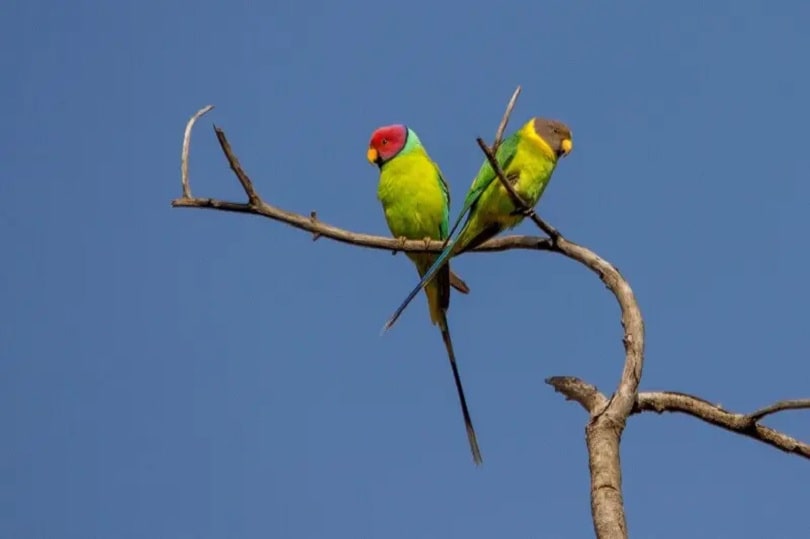
This species of parakeet is dimorphic, meaning that males and females have different plumage colors. It is relatively easy to tell them apart by looking at the variations in their feathers.
The body of both sexes is primarily green, but there are different shades on the breast, abdomen, back, and wings. Males have purplish-red heads with a black ring around the neck.
Females have blue-gray feathers on their heads and lack the black neck stripe. Instead, many of them have yellow-tinged feathers around their necks.
Caring Plum Headed Parakeets
The plum-headed parakeet has a long tail, so it’s best to keep it in a relatively large cage. The cage should have a 24-inch-by-36-inch footprint and be 36 inches tall, with bars spaced no more than 1/2 inch apart.
Include a different play gym containing toys within the cage, and another play gym separate from the cage for exercise periods.
If you are keeping a pair of birds, provide them with a larger aviary enclosure. In an aviary setting, the plum-headed is one of the few parrots that will happily coexist with non-competing birds, such as finches.
The plum-headed parakeet needs some time outside the cage every day, similar to any other parrot, but it does not need constant petting and playtime like other, more demanding parrots.
Instead, it will likely be content to merely sit on your shoulder and “talk” with you. If it does not get this level of daily interaction, though, the bird may withdraw and even become somewhat wild again.
Diet Plan For Plum Headed Parakeets
This bird feeds mostly on fruit and seeds in the wild, and like other parrots, does best in captivity when it has a diet consisting of a high-quality seed mix and pellet supplement, daily. You can feed your bird up to 1 tablespoon of food per day, and should offer fresh, bird-safe fruits and vegetables as well.
Plum Headed Parakeets enjoy a varied diet, so feel free to experiment with different foods like sprouts, leafy greens, berries, and peppers. Keep in mind that birds cannot pick up on “spicy hot” flavors like humans can, so many of them actually enjoy picking apart spicy peppers to get at the seeds inside.
Baby Plum Headed Parakeet Can be Tamed
A baby Plum Headed Parakeet can be tamed with just a little bit of patience and effort. You will need to set aside 3 to 4 hours each day to train your new pet. A tamed Plum Headed Parakeet will quickly become a cherished member of your family. They are known for their playful and loving nature, and you will quickly develop a strong bond with your new friend.
Plum Headed Parrot Price
Lets discuss about price tag of Plum Headed Parrot, baby plum headed, Adult plum headed and breeder pair of plum headed. Each one has their own pricing. We will discuss their pricing in USA, India, Pakistan.
Plum Headed Price in Pakistan
The plum headed parrot is a beautiful bird that is native to Pakistan. These birds are very popular in the pet trade and are highly sought after by bird enthusiasts. This parrot plum headed is a relatively small bird, with a body length of only about 10 inches. Plum head and neck are the most distinctive features of this bird. The plum head is a bright, deep purple color, and the neck is a lighter shade of purple. The plum head parrot is a very active bird and loves to play. They are also very social birds and enjoy being around other birds and people. The plum headed parrot is a very popular pet bird in Pakistan and can be found in many pet shops. The average price of a plum headed parrot in Pakistan is about Rs. 20,000.
- Plum Headed Breeder Pair Price in Pakistan is 18000-20000 Rs.
- Plum Headed Hand tamed price in Pakistan is 12000 Rs.
- Plum Headed Male or Plum Headed Female price is around 10000 Rs.
Plum Headed Parrot Price In USA
The plum headed parrot is a popular pet bird in the United States, and its price can vary depending on a number of factors. The bird’s age, gender, health, and appearance are all important factors that can affect its price. A plum headed parrot that is healthy and of good appearance can fetch a higher price than one that is not. The price of a plum headed parrot can also vary depending on where it is being sold. A bird that is being sold by a breeder or a pet store is likely to be more expensive than one that is being sold by an individual.
- Plum Headed Parrot price in USA is $200.
- Plum Headed Breeder Pair Price in USA is $800.
- Plum Headed hand tamed parrot price in USA is $350.
Plum Headed Parrot Price In India
The plum headed parakeet is a beautiful bird that is native to India. They are also known as the gregarious parakeet or the hill parakeet. These birds are very social and love to be around people. They are very playful and make great pets. The plum headed parakeet is an intelligent bird and can learn to talk. They are also very good at mimicry. The plum headed parakeet is a very popular pet bird in India and the breeder pair price is very reasonable.
Plum Headed Parakeet Price in Maharashtra India
The plum headed parakeet is a very popular bird among parrot fanciers in Maharashtra, India. These birds are very beautiful, with their distinctive plum-colored heads. They are also very intelligent and playful, making them a great pet. However, they can be quite demanding, and require a lot of attention and care. As a result, they can be quite expensive, costing up to 10,000 INR in some cases.
Cost To Bring Home Plum Headed Parakeet
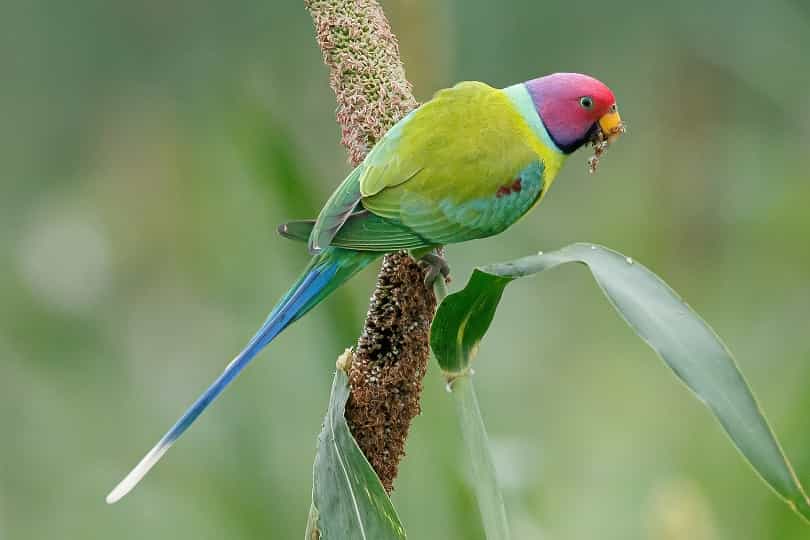
When it comes to keeping a Plum Headed Parrot, there are a few things you’ll need to take into account. Firstly, they need a lot of space, so you’ll need to find an aviary, crate, or cage that’s specifically designed for them. They’ll also need plenty of toys and perches, as well as food and water.
When it comes to the cage, size isn’t as important as design. It should be very colorful to keep your bird from getting bored.
If you have questions about what you’ll need to do before bringing your Plum Headed Parrot home from the breeder or bird shop, please don’t hesitate to reach out to us. We’re more than happy to advise you on your state’s regulations and basic setup for your new arrival. We want your experience with your new pet to be as seamless and enjoyable as possible.
Supplies List For Albino Red Eye Parrots
Depending upon the number of birds costs may change following are for the single bird of this category
Property Cost Permit Required Permission if is Imported in your Country Cage 5000 As Aviary Setup Cage Setup Perches Cover etc 1000 Additional Transportation Cage 500 Water Bowl 500 Food 500
Monthly Expense for Keeping Plum Headed Parrots
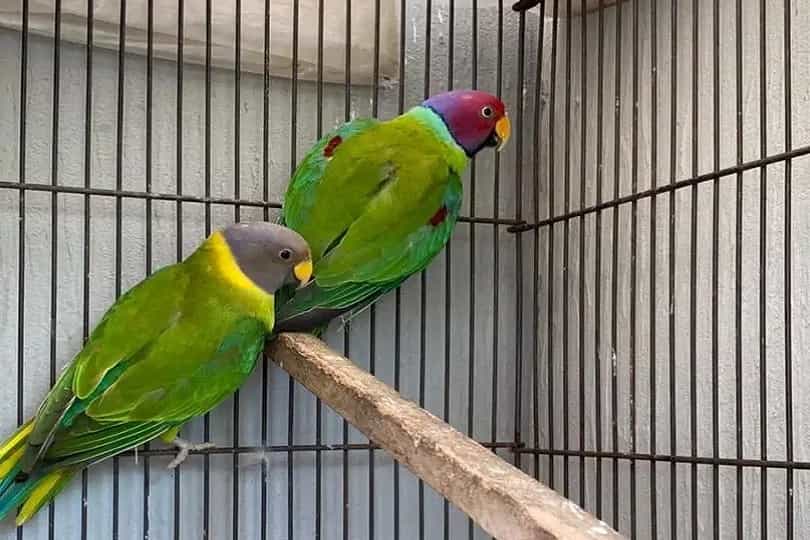
The monthly expense for keeping plum headed parrots can vary depending on a few factors. The biggest factor is whether you are keeping them indoors or outdoors.
If you are keeping them outdoors, you will need to factor in the cost of a suitable enclosure, which can range from 15000 to 25,000 depending on the size and type of enclosure. Other costs to consider are food, which will be around 2500 per month, and toys and other enrichment items, which can range from 1500 to 2500 per month.
Plum Headed Parakeets are relatively easy to care for and can be kept indoors. However, there are some monthly expenses that you need to be aware of when keeping these birds.
We will need to purchase a good quality bird cage. These birds need plenty of space to move around and exercise, so make sure the cage is large enough. You will also need to purchase bird food, toys, and other accessories for the cage.
- Food For Albino
- Health Care Expenses
- Perches and Water Bowls For Albino Red Eye
- Regular Vet Visit and Vaccination
- Insurance Price for Albino Parrot
- Entertainment Expenses
In detail, Lets discuss each component of Monthly Expense;
Food For Plum Headed Parrots
Plum headed birds are beautiful creatures that make for great pets. They are relatively easy to take care of, but as with any pet, there are some things you should know about their care and diet before bringing one home.
In the wild, plum headed birds generally eat fruits and seeds, but in captivity they will also eat grass buds, cereals, and figs. You will need to make sure that all of the food you provide is fresh before giving it to your bird.
Fresh food not only keeps your bird healthy, but also provides them with the nutrients they need to stay active and playful.
Health Care Expenses
As a pet owner of a Plum Headed Parakeet, you will need to budget for regular veterinary care and check-ups. This breed of bird is susceptible to health problems, so it is important to take them to the vet for regular check-ups.
You will also need to pay for any medication or treatment that is recommended by the vet. If you’re a pet owner, it’s imperative to remember that if a pet seems sick, they should be moved to a separate living facility in order to prevent them from spreading any sickness to other birds.
If you have multiple animals in your home and one gets sick, it’s important to remove that animal from the others immediately to prevent further spread of illness.
Veterinarian Visit On Regular Basis
You should never feed your Plum Headed Parakeet any kind of seeds – even if they’re advertised as being healthy for birds. All seeds are not created equal and if your parakeet eats the wrong kind of seeds, they could become malnourished or even overweight.
This could cause health problems for your bird which might be expensive to treat, or even deadly in the long run. Instead, only feed your Plum Headed Parakeet a healthy diet of bird pellets and approved bird seeds.
These might be more expensive than regular bird seed, but it’s much better than spending money on expensive vet bills in the future.
As the owner of a Plum Headed Parakeet, you want to give your pet the best possible chance at a long, healthy life. This means getting a veterinarian involved as soon as possible, even if your pet is just showing early signs of illness. A vet will be able to help you identify any potential health problems and create a treatment plan to keep your parakeet healthy and happy.
Vaccination Plan
It is important to vaccinate your plum headed parrots to keep them healthy and safe from all types of bacteria and health issues. There are a variety of vaccines available that can protect your parrots from diseases such as hepatitis, parrot fever, and avian influenza.
Talk to your veterinarian about which vaccines are right for your parrots and make sure to follow their recommendations for vaccination schedules and booster shots.
By taking these precautions, you can help ensure that your plum headed parrots stay healthy and safe for years to come.
Perches and Water Bowls
Your Plum Headed Parakeet will live a healthier lifestyle with perches and water bowls in its cage. Different types of birds have distinct dietary requirements that must be met on a daily basis, and these needs depend on the bird’s level of activity during the day. For example, after a day of perching, drinking from a mounted water bowl gives fisher lovebirds straightforward nutrition.
If you want to regularly care for the small details in your life, like offering fresh cut food daily, make sure there are two places for it to sit comfortably while you’re eating.
Having a place for your food to rest will not only make it easier for you to eat, but it will also help you to appreciate the freshness of the food more. Make sure one place is designated as the “food safe” where you can keep your perishables so they don’t spoil and the other is where you can keep your prepared meals or snacks.
This way, you can offer yourself healthy and delicious options without having to worry about them going bad.
Entertainment Cost
Plum-headed parakeets are very active birds in the wild, so they need a lot of exercise in captivity. They should have an outdoor play area where they can spend 3-4 hours each day.
Always supervise this free period to prevent accidents and injuries. This exercise and interaction time is critical for keeping a plum-headed parakeet healthy and well socialized.
Toys
Plum Headed Parakeets are already a popular pet, and there are many toys available on the market that are specifically designed for them. They like to climb, so a toy that is at least six inches tall and that they can climb on would be perfect for them. They also eats a lot, so they need healthy treats as well as fresh veggies and fruits.
Insurance Plan For Plum Headed Parakeets
We recommend taking out pet insurance to help make things more manageable. This way, you can rest assured knowing that your Plum Headed Parakeet is taken care of in the event of an accident or illness.
It’s important to make sure that everyone who has a stake in your parrot’s life understands the importance of getting responsible pet insurance coverage. This coverage should cover all areas of your Albino’s needs, from organ transplants to avian flu.
Total Monthly Price For Owning Albino Red Eye At Home
We have discussed some of the key issues you should take into account before owning a Plum Headed Parakeet. While there are certainly additional considerations and provisions required for owning one of these beautiful birds.
It is not nearly as troublesome or expensive as it may initially seem. The sweet sound of their chirping can undoubtedly make your day more enjoyable.
So, if you’re willing to put in the extra effort required to care for a Plum Headed Parakeet, then go ahead and add one of these feathered friends to your home today.
Additional Expenses
Owning a Plum Headed Parakeet comes with a few things to keep in mind, such as the possibility of a natural disaster or your pet getting lost. Always having backup plans in place is crucial, regardless of what you’re trying to prepare for.
You never know when something could happen, so it’s important to have a few different options to fall back on should something go awry. There are a lot of things that could go wrong, so being prepared for anything that might come up is key.
How To Train Plum Headed Parrots
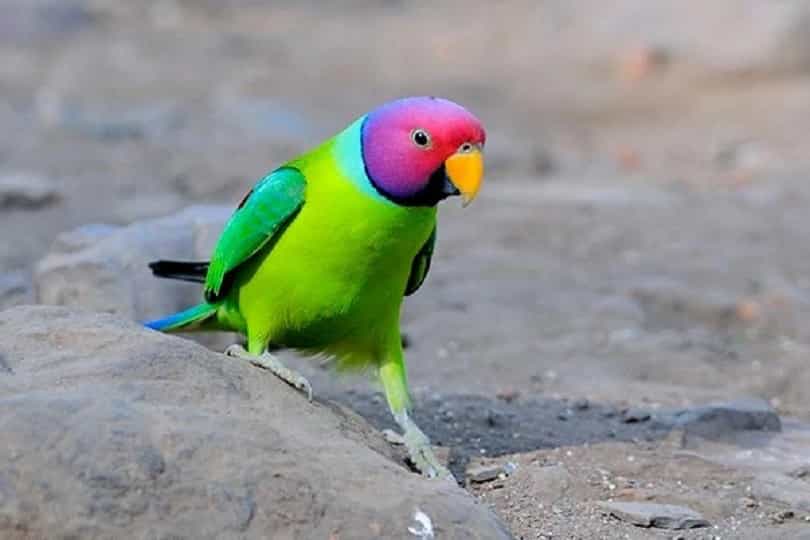
Plum-headed parakeets are small, social birds that rapidly adapt to new surroundings. They make great pets because they’re highly social and adaptable in US lifestyles. In this article, I will teach you how to handle a plum-headed parakeet. Parakeets with plum heads are ideal because they require less care than other birds with larger heads.
Plum-headed parakeets are not only attractive, but they are easy to take care of as well. In this article, we will look at a way to train your fingers on the plum-headed parakeet who continues to bite you. We will also teach you the best way to teach them and find out how to help a stubborn Plum-headed parakeet escape its cage.
Training a parakeet can be both enjoyable and rewarding, but it’s important to realize that success takes time and patience. There are a variety of variables that can affect your training success, including your pet’s personality. A Plum-headed parakeet is more likely to respond well to exercise if they are fed by hand or handled frequently.
Before you begin training your plum-headed parakeet to do tricks, it is important to get the animal comfortable with taking direction from you and not be scared of people. Once your pet is used to this, you will be able to teach it other tricks more easily. In order to best train your Plum-headed parakeet, I will explain what you need to know before getting started.
Steps To Know For Training Plum Headed Parrot
You must know these three steps before you start to train your Plum Headed Parakeet.
01- Build Trust of Your Plum Headed Parakeet
A new Plum-headed parakeet can be challenging to handle and may become frightened when introduced to a new environment. Start by allowing your bird a week to adjust and become comfortable in the surroundings. Once your bird has acclimated, begin training by working on hand taming to build trust between you and your bird.
If you want to hand tame your pet bird, you’ll need to start by helping them get used to being handled by humans. This process is called taming, and there are various methods you can use to achieve it. However, it’s important to remember that taming birds takes time, patience, and lots of positive reinforcement.
There are numerous ways to control a parakeet, but experts recommend starting by trimming their wings with an expert pet groomer. This will help them feel more comfortable and make it easier for you to control them during the taming process.
Trimming your plum-headed parakeet’s branches will hinder its ability to fly to great heights or at all, making the process of training simpler for you and your bird’s companion. It also helps make the entire training process much more secure. First, you must hand-tame your bird and then teach them. Hand-taming a plum head parakeet will earn him trust with time.
02- Quality Time Spend With Your Plum Headed Parakeet
Don’t overtraining your pet as it could make them bored next time. It is advised to exercise your Plum-headed parakeet only once per day for 10 minutes each time. Initially, your bird might not be able to sit in your fingers for longer than a couple of seconds, but over time and with regular training sessions, they will feel more comfortable near you.
If you observe your bird appearing scared or flying away from your finger, you can encourage your plum-headed bird to come back using millet or tasty treats as reinforcement. If you own a Plum-headed parakeet that was not only raised in captivity but also fostered by hand, it will be more likely to adjust to humans.
A pet that has been raised by hand and is able to fly has already been tamed. Parakeets that are purchased from big commercial pet stores are usually fearful and wild, and they are not handled by a person. Offering treats is an excellent method to entice an unassuming plum-headed parakeet, especially if it is purchased from pet stores at retail prices.
03- Patience is Important Factor While Training Plum Headed Parakeet
Training a bird, such as a plum-headed parakeet, requires time, effort, and patience. There is no specific time frame for how long it will take an individual bird to master a particular behavior.
Some birds learn quickly, while others may take weeks or even months. Remember to be patient and consistent when training your bird, and eventually, you will see results.
The process of teaching a Plum-headed parakeet to speak can take up to a year. As it is an extremely individual skill that many parakeets don’t attain. However, if this does happen, be in love with your plum head parakeet and be content with the person they are.
It’s important to keep in mind that your bird has no say in its living conditions and is entirely dependent on you for medical care, food, shelter, happiness, and livelihood for the remainder of its existence.
Final Thoughts
If you’re looking for a cheerful companion to come home to at the end of a long day. Then a plum-headed parakeet might be the pet for you. These social creatures have been known to provide their owners with years of loyal companionship.
However, it’s important to remember that these birds require a long-term commitment. They’re not a pet that you can simply release into the wild after tiring of them. If you’re up for the challenge of caring for a plum-headed parakeet. Then you’ll be rewarded with a lifetime of friendship.
Before you decide to buy a plum-headed parakeet, keep in mind that they require a significant time commitment. They typically have a lifespan of 20-30 years.
In addition, they require regular socialization; if you don’t take the time to interact with your bird regularly. And it may become withdrawn. Be sure to discuss these factors with your family before making the decision to purchase a plum-headed parakeet. If you decide this bird is right for you, you won’t regret adding it to your family.
FAQs
Are plum headed parakeet good pets?
The plum-headed parakeet is a medium-sized parrot that is native to Asia. This beautiful bird makes a great pet, as it is not as aggressive as some other parrot species. The plum-headed parakeet is known to get along well with other birds. It makes it a great choice if you are looking for a pet that can socialize with other animals.
Are Plum Headed Parakeets best companion?
Yes, There are many reasons why plum headed parakeets make such great companions. First of all, they are very social birds and love to interact with their human companions. They are also very intelligent and can learn tricks and behaviors easily. They are also relatively quiet birds, so they won’t disturb your peace and quiet.
Lastly, they are very beautiful birds and their plumage is truly stunning. If you’re looking for a feathered friend, you can’t go wrong with a plum headed parakeet.
What does plum headed parakeet eat?
The plum-headed parakeet is a fruit and seed eating bird found in the wild. In captivity, they do best on a diet of high-quality seeds. And pellet mix, supplemented with fresh fruits and vegetables daily. These birds will eat up to 1 tablespoon of food per day.
Is plum headed parakeet illegal in India?
Amrut Singh, President of the Animal Rescue Squad of Bicholim. Told the Times of India that “it is illegal to keep plum-headed parakeets in captivity as the bird is included in India’s protected species of birds list. Therefore, the bird cannot be trapped or kept in captivity or sold.”
What is the difference between blossom headed and plum headed parakeets?
The male Plum-headed parakeet has a reddish purple head and a tail with a white tip. In contrast, the male Blossom-headed parakeet has a light pink head and a yellow tipped tail. Another difference between the Slaty-headed and the Blossom-headed/Plum-headed group is the Slaty-headed’s reddish upper mandible with a yellow tip.
When do plum headed parrot breed?
The typical breeding season for these birds begins in April. The average clutch size is usually between 4 and 6 eggs. And the incubation period lasts from 19 to 23 days. The chicks will fledge at about 6 to 7 weeks of age. The females may become aggressive towards the males during the breeding season.
Can plum headed parakeet talk?
Many of these birds, especially males, are excellent talkers. The chattering begins at around 6 to 8 months of age. It can quickly turn into coherent mimicry if the bird’s owner is willing to talk with them frequently.
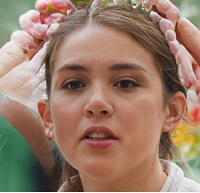
Bird Enthusiast
Masters in Counseling & Data Sciences
University of Maryland
Professional Parrots, Pigeons Breeder and Keeper
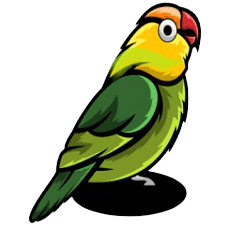

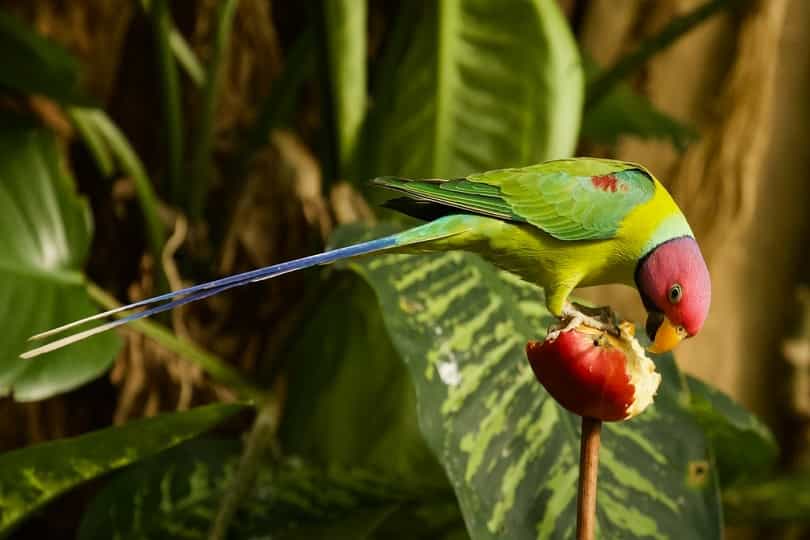

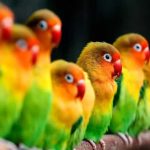

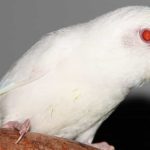

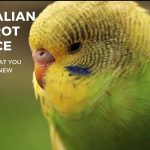
1 thought on “Plum Headed Parrot Price In Pakistan”